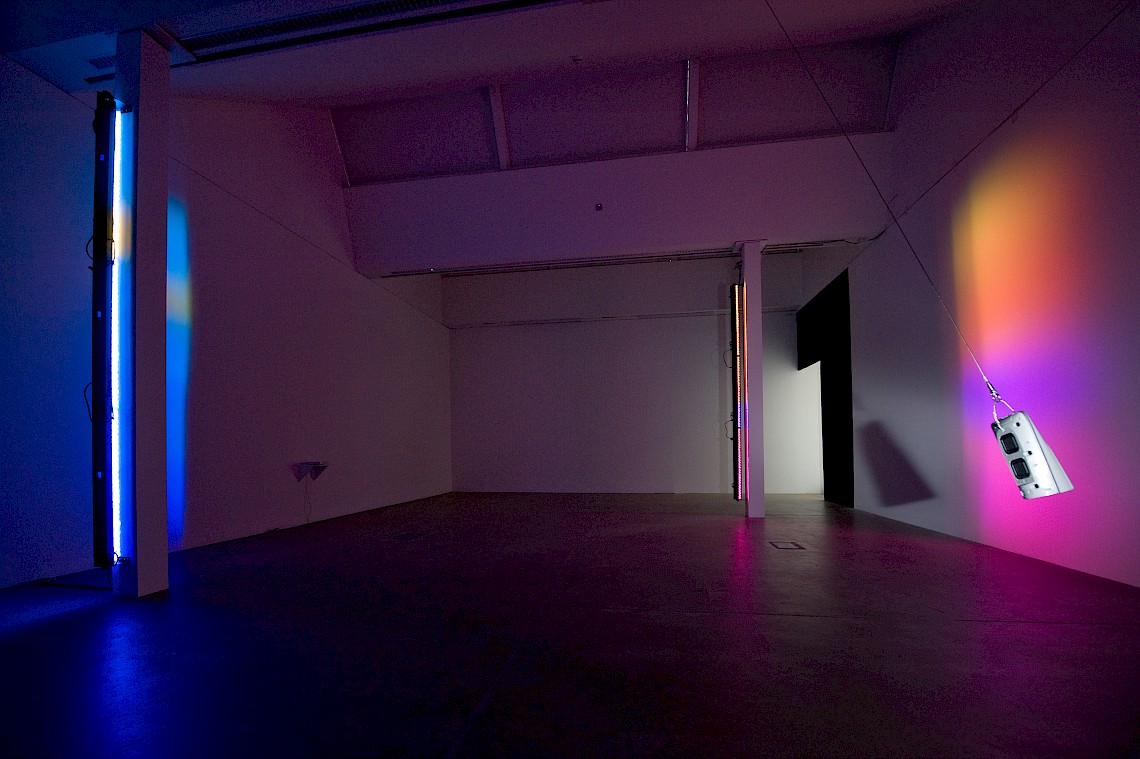This Friday, September 29, the pioneering composer and electronic musician Mark Fell premieres 7 Facts In Logical Space—his new multi-channel sound project for the experimental performance organizer Lampo and the Chicago Architecture Biennial. The piece features 24 speakers positioned around the Chicago Cultural Center’s Preston Bradley Hall, placing electronic sound in dialogue with the acoustic and architectural space.
The performance is free. Please click here to RSVP.
Conceived as a sonic framework for the Chicago-based bassoonist and improviser Katherine Young, the piece develops Fell’s concern with the spatial distribution of synthetic sound in response to the architectural environment and the interplay of geometries. Fell describes 7 Facts In Logical Space in terms of the relationships between shapes and textures, between the oblique network of synthetic lines and the visceral, organic pacing of Young’s turbulent acoustic timbres.
The CAB Blog had a chance to catch up with Fell this week to talk about the piece and how his unique sound can open up new perceptions of the built environment and the art of architecture.
CAB Blog: Tell me about the new piece that Lampo and CAB commissioned. What should audiences expect in the performance on September 29?
Mark Fell: When andrew invited me to consider working in the space, my first response was to the geometry of the space—which, if you look on a plan, is basically two squares and a circle. I find these basic shapes very appealing, and they keep coming back to my work.
Essentially the piece is based around the distribution of speakers (and therefore points of sound) within the space. I’m thinking of it in terms of different combinations of shapes and textures, rather than a traditionally musical composition which, I would argue, prioritizes pitch, harmony, time and so on and often produces an emotional reading. Here I’m not after any kind of emotional reading of the work. Instead, it’s a set of sounds shapes and textures placed in space.
Although my work is often thought of as loud or chaotic, I’m actually also equally interested in very quiet sounds and linear structures. And in this piece I focus on linear, and rather quiet, structures. It can be thought of as a kind of framework within which Katherine performs.
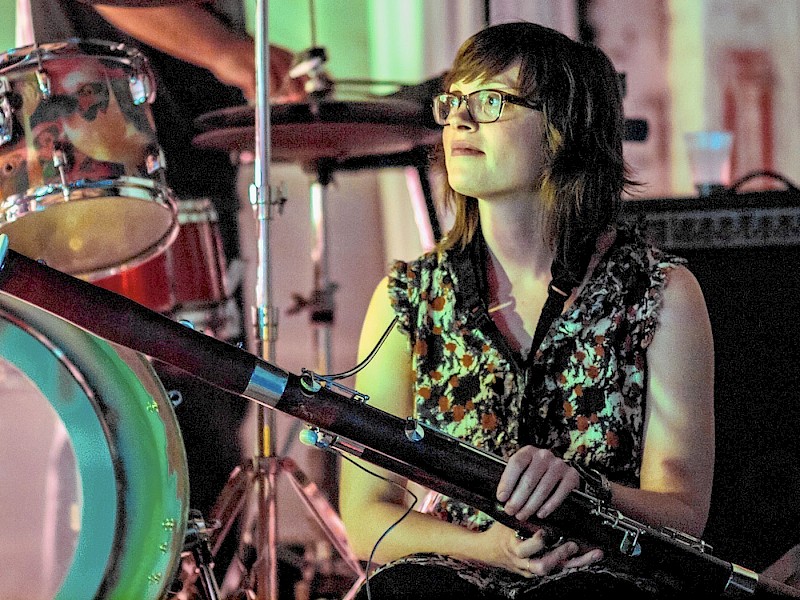
CAB Blog: What will Katherine Young's role be in the performance? How does this piece reflect your approach to collaboration?
Mark Fell: For me the interest is in the combination of the very electronic form of the sounds positioned in the space, and Katherine’s point of acoustic sound. The relationship between the way those sounds occupy space, and the color and shape of those sounds, will be really interesting. Like hand drawn scribble over graph paper, if you get my point.
CAB Blog: You'll have 24 speakers placed around Preston Bradley Hall, but I believe you've said it isn't a surround-sound work, correct? What does that mean?
Mark Fell: One thing that needs to be repeatedly stressed is that all sound is surround sound, all sound is three dimensional. I avoid that term for that reason. But also, I think when someone describes a work as “surround sound,” it brings with it lots of expectations: typically, swirling sounds that move dynamically around a centrally fixed listener. These techniques are typically based on illusion and emulate the trajectories and behaviors of things we encounter in the real world. For me however, I’m from a different tradition.
CAB Blog: Instead, I believe you have an idea about "concrete" approaches to sound rather than using sound as illusion or decoration. Can you say more about that idea? Does that relate to architecture for you?
Mark Fell: If we think about the history of painting, for example, there was a general move away from paint and canvas as a way of depicting the world or its physical form towards an interest in the exploration of materials or the basic elements of visual vocabularies. I think my work is more aligned to that sort of paradigm. I tend to work with very concrete ways of positioning sound in space–two oscillations in different speakers, for example–as opposed to the illusion of sound moving between speakers.
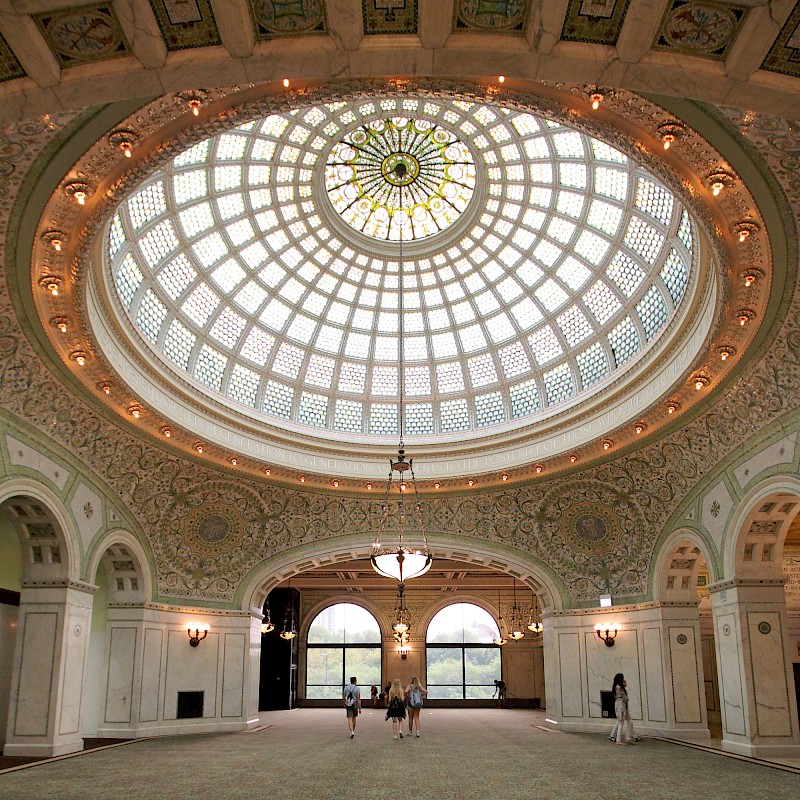
CAB Blog: What's exciting for you about Preston Bradley Hall? How did the space inform how you developed the piece and how does it continue your interest in making site-specific work?
Mark Fell: From the photos I can only guess at its acoustic character and behaviors, but what excites me about the hall is the behavior of sound in the space. For me, the act of listening is very important. I think when we listen to very quiet distributed sounds, we enter into a different kind of listening and a different relationship to our environments. For example, I recently curated a large exhibition in Moscow and I asked the Norwegian field recordist Jana Winderen to consider working in a very, very large power station. But I asked her to consider using very quiet sounds, so that people would have to listen, take time, focus, and let their awareness of the sound grow slowly. And in this way they entered into a different relation to the space and the work and sort of became more absorbed in it as their focused listening drew them into the entire expanse of the space around them.
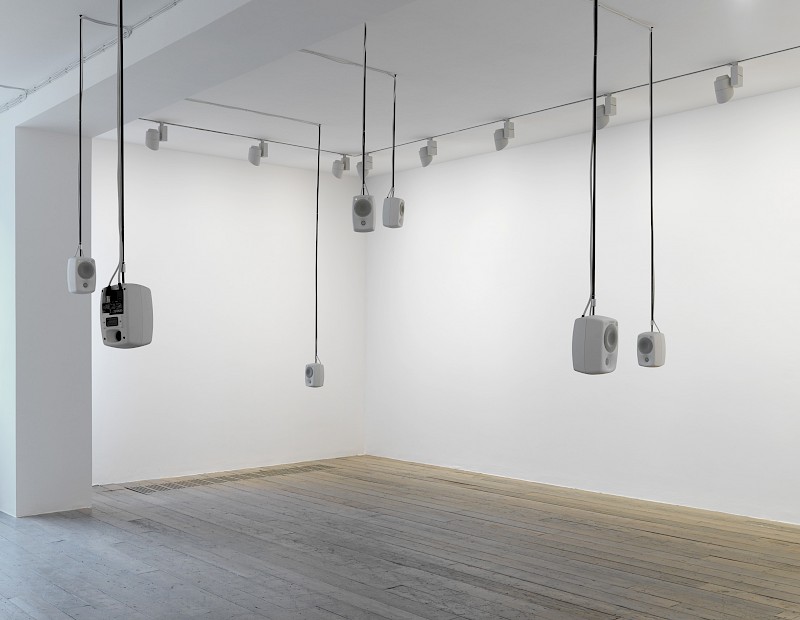
CAB Blog: Your performances often involve immersive visual and tactile installations in addition to sound, and they often take place in museums and arts spaces. What drives your interest in creating multisensory experiences, and why do you think it's interesting to do sound work in the context of an architecture biennial?
Mark Fell: I think the way that light, sound and so on can transform space (and thus one’s experience of space and one’s self within the space) is fascinating. I’m quite interested in the history of western philosophy and what happened to it in the twentieth century. I’m interested in phenomenology and cognitive science in particular, and I think this informs my work in terms of creating spaces that foster certain kinds of curiosity, certain kinds of thinking and awareness, and certain kinds of ways of relating to and being absorbed within the environment.
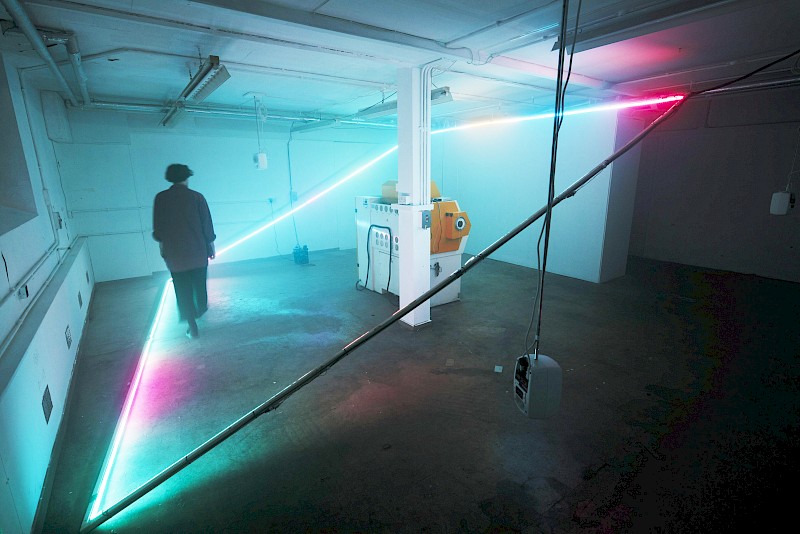
CAB Blog: As a sound artist, how do you think you perceive architecture differently from architects themselves? Are there certain dynamics you wished that architecture paid more attention to?
Mark Fell: I’m always reluctant to make generalizations. I think when we enter a space like a forest, we probably are all aware of how the sound behaves at some level and how that makes us feel. I’ve spent a long time studying sound, acoustics, psychoacoustics and sound synthesis, so it would be a bit naive of me to claim I don’t have a different way of understanding acoustic environments, but I think that difference would basically result in detailed verbal descriptions of what is obvious to everyone else.
Having said that, I think architecture is only just rediscovering the importance of sound. I say “rediscovering” because I think historically there was an implicit understanding, actually a very detailed understanding and engineering, of sound in space. There is a popular saying that church designers were the first audio engineers, and I think that is true. I just performed a piece in a large cathedral in paris, and the experience reaffirmed my belief that such spaces were built to favor some kinds of sounds and to make others less appealing.
I think that in the 20th century an understanding of sound in architectural practice was to some extent lost or overlooked. Although I am a massive fan of architectural modernism and brutalism, I think these practices formed largely in response to visual media and visual literacy as opposed to acoustic literacy. They look great in photos, they look great if you are a silent observer, and they may even be great to live and work in, but often the design implies silence.
Marble, for example, may look beautiful, but it has certain acoustic behaviours that need to be understood. Another example is when institutions build for exhibitions of artwork, performances and so on, with air conditioning systems that have to be disabled so that sound or music can be properly presented. This prejudice against sound is very deeply ingrained in many cultural organizations.
But I am happy to say that these days architects are rediscovering their role as the first sound engineers, and making buildings that allow us to feel sonically comfortable and well-considered. Actually, if I could look back and choose any career now, I’d like to work as an architect.
For an overview of how to explore the Biennial's exhibitions and programs, click here.



